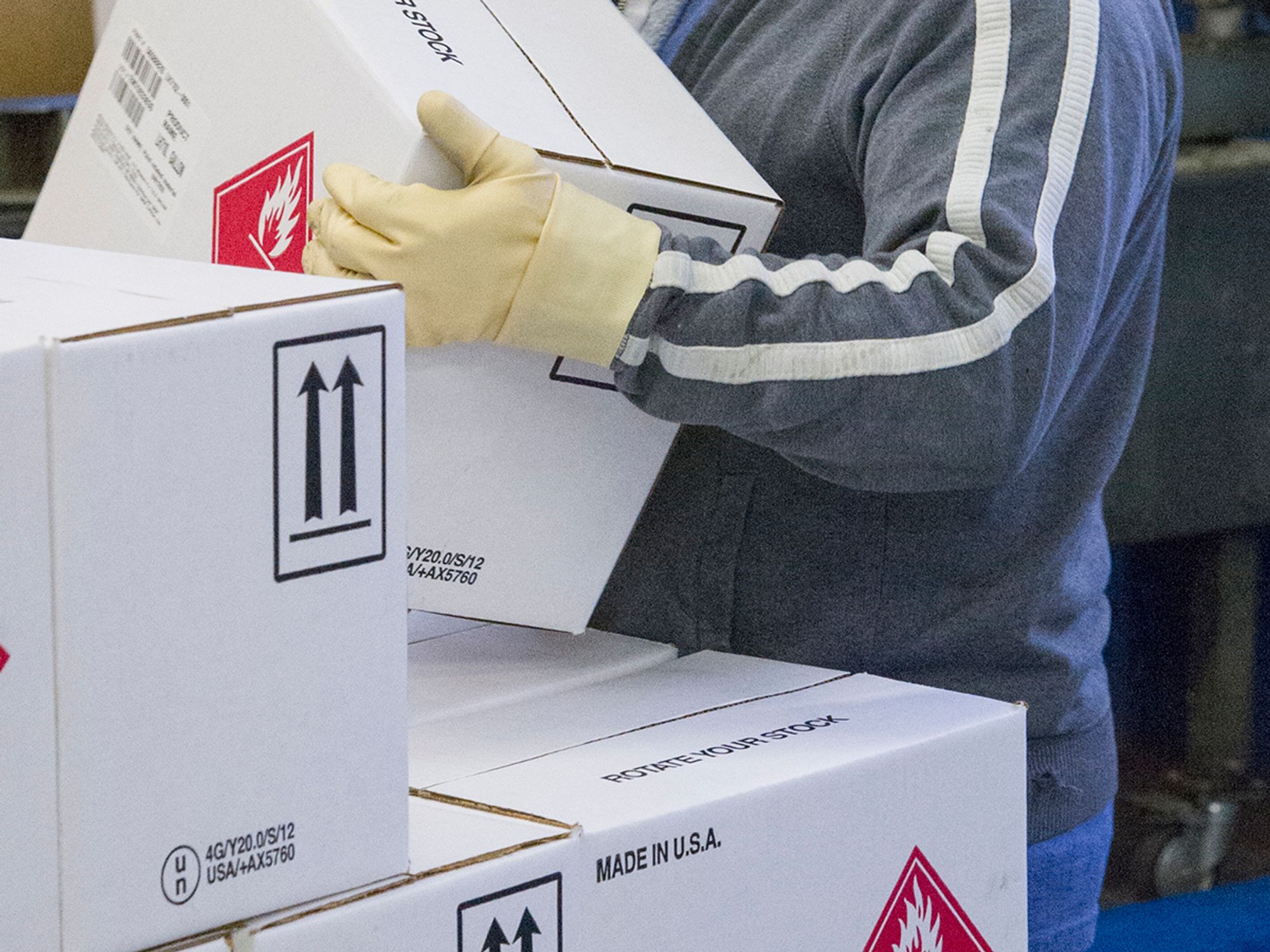Stacking test

- All packaging design types used in transportation must pass a stacking test.
All packaging design types, other than bags, must be subjected to a stacking test. The regulations require three test samples for each different packaging — except for one each for periodic retesting stainless steel, monel, or nickel packaging. Exceptions for the number of aluminum and steel sample packagings require approval from the Pipeline and Hazardous Materials Safety Administration (PHMSA). Notwithstanding the provisions of 178.602(a) of this subpart, combination packagings may be subjected to the stacking test without their inner packagings, except where this would invalidate the test results.
The test sample must be subjected to a force applied to the top surface of the test sample equivalent to the total weight of identical packages that might be stacked on it during transport. The minimum height of the stack, including the test sample, must be 3.0 m (10 feet). The duration of the test must be 24 hours, except that plastic drums, jerricans, and composite packaging 6HH, intended for liquids, shall be subjected to the stacking test for a period of 28 days at a temperature of not less than 40°C (104°F).
Alternative test methods that yield equivalent results may be used if the Associate Administrator approves. In guided load tests, stacking stability must be assessed after completion of the test by placing two filled packagings of the same type on the test sample. The stacked packages must maintain their position for one hour. Plastic packagings must be cooled to ambient temperature beforehand.
Periodic retesting must take place in accordance with 178.606(c)(1) or using a dynamic compression testing machine that meets the specifications of that section.
Passing the test
No test sample may leak. In composite packagings or combination packagings, there must be no leakage of the filling substance from the inner receptacle, or inner packaging. No test sample may show any deterioration that could adversely affect transportation safety or any distortion likely to:
- Reduce its strength,
- Cause instability in stacks of packages, or
- Cause damage to inner packagings that would be likely to reduce safety in transportation.
For the dynamic compression test, a container passes the test if, after application of the required load, there is no buckling of the sidewalls sufficient to cause damage to its expected contents. In no case, may the maximum deflection exceed one inch.
